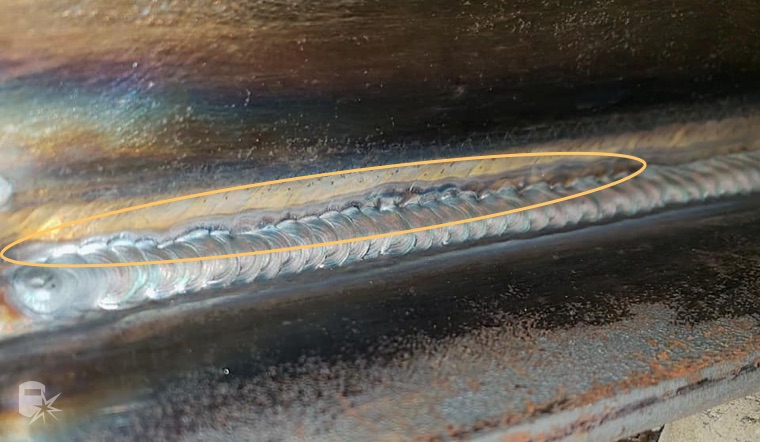Specialist Approaches for Preventing Weld Undercut Properly
A Comprehensive Overview to Identifying, Stopping, and Dealing With Undercut Welding Troubles in Your Welding Jobs
In the world of welding, running into undercut problems is a common difficulty that can compromise the architectural integrity and general quality of your welding tasks. Remain tuned as we discover the important components of determining, avoiding, and taking care of undercut welding problems, giving you with beneficial insights and approaches to elevate your welding abilities to the next level.
Typical Sources Of Undercut Welding
Undercut welding, a typical concern in welding processes, can be caused by different variables that need to be meticulously determined and resolved to make sure the integrity of the weld joint. Among the key reasons of undercut welding is excessive warmth input. When the welding parameters, such as voltage, current, or travel rate, are not correctly set, an extreme quantity of warm can be created. This excess warmth leads to the melting and subsequent removal of the base material along the sides of the weld joint, developing a groove recognized as undercut.
One more typical cause of undercut welding is incorrect welding method. Inadequate control of the soldering iron or gun, wrong angle or distance in between the work surface and the torch, or inconsistent travel speed can all add to the development of undercut. In addition, making use of the wrong welding consumables or electrode size for a particular joint configuration can lead to undercut concerns. Determining these root causes and executing corrective actions is crucial in avoiding and correcting undercut welding issues in welding projects.
Identifying Undercut in Welds

To recognize undercut properly, correct lights and magnification tools are important to examine the weld joint extensively. Using tools such as a welding gauge or a magnifying glass can help in identifying even the smallest undercut blemishes. In addition, running a finger or a finger nail along the weld joint can often disclose undercut, as the surface area might feel uneven or have a dip where the undercut exists.
Safety Nets for Undercut
Having a deep understanding of the root causes of undercut in welds enables for the implementation of effective safety nets to keep weld top quality and honesty. One critical preventive procedure appertains weld joint prep work. Making sure that the edges are tidy, without impurities, and properly beveled can substantially lower the possibility of undercut (Preventing weld undercut). Furthermore, selecting the appropriate welding criteria, such as voltage, existing, and travel rate, is vital. These setups need to be enhanced to avoid too much heat input, which can result in undercut development.

Methods for Repairing Undercut

Increasing the welding existing or decreasing the link travel speed can aid fill in the undercut. Additionally, transforming the welding technique from a press to a drag or vice versa can additionally help decrease undercut.
One more strategy is to use a weaving motion while welding to make certain proper sidewall blend and fill in the undercut. By oscillating the welding arc back and forth within the weld joint, the welder can deposit a lot more filler material into the undercut locations, effectively eliminating the defect.
Moreover, grinding out the undercut and rewelding the joint can be a viable service for extra serious undercut problems - Preventing weld undercut. This procedure entails removing the undercut section, preparing the base steel, and after that rewelding the joint with proper welding specifications and strategies to avoid undercut from persisting

Expert Tips for Preventing Undercut
Making use of appropriate welding strategies and maintaining control over crucial welding parameters are crucial strategies for welders intending to protect against undercut in their weld joints. Furthermore, picking the ideal welding process and filler metal for the details application can help avoid undercut. Maintaining a regular traveling rate throughout the welding process is another crucial pointer to protect against undercut.
Final Thought
To conclude, identifying, protecting against, and fixing undercut welding issues in your welding projects is critical for making sure solid and durable welds. Preventing weld undercut. By comprehending the typical root causes of undercut, having the ability to determine it in welds, applying precautionary steps, and using appropriate methods for taking care of undercut, you can avoid potential issues and develop top quality welds. Following professional ideas for preventing undercut can assist you enhance your welding skills and produce much better lead to your projects
Undercut welding, a common concern in welding procedures, can be caused by numerous variables that require to learn this here now be very carefully determined and dealt with to make sure the stability of the weld joint. Additionally, running a finger or a finger nail along the weld joint can occasionally go to the website expose undercut, as the surface might really feel irregular or have a dip where the undercut exists.
Utilizing proper welding techniques and keeping control over crucial welding specifications are vital approaches for welders intending to avoid undercut in their weld joints.In conclusion, recognizing, protecting against, and dealing with undercut welding troubles in your welding jobs is crucial for making certain resilient and solid welds. By comprehending the common reasons of undercut, being able to determine it in welds, executing preventative procedures, and utilizing appropriate techniques for dealing with undercut, you can prevent potential problems and create high-grade welds.